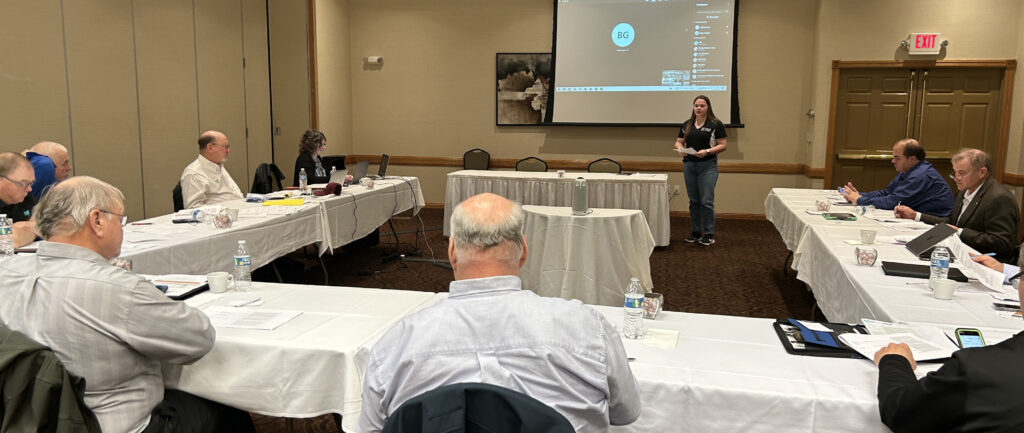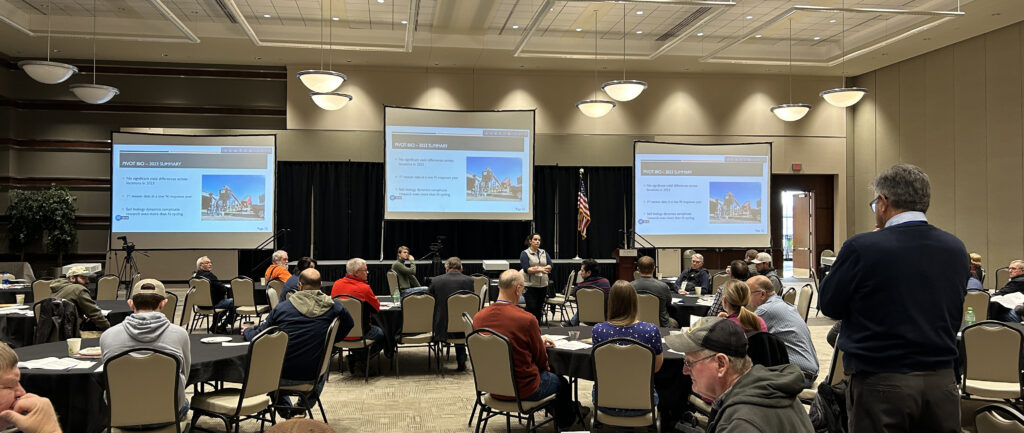Most pasture and grain farmers are very familiar with dicamba. This Group 4, growth regulator herbicide has been accessible to Minnesota farmers for nearly 60 years.
Dicamba-tolerant soybeans and the herbicides EngeniaTM (BASF), Xtendimax with Vapor Grip TechnologyTM (Monsanto) and most recently, Fexapan plus Vaporgrip TechnologyTM (DuPont), are specifically labeled for use and EPA’s label response to this new technology:
The EPA has imposed many restrictions on the use of these products, and the reasons the EPA has chosen this route requires a brief history lesson.
Dicamba acid has been available for use in Minnesota since 1958, when it was especially marketed for small grains and wheat. It was very effective for control of broadleaf weeds. Three conclusions were immediately drawn: dicamba had limited effect on grasses (which is why it worked in small grains); it wasn’t very effective on very tall weeds (>4”); and last but not least, dicamba acid moves.
It was evident that dicamba not only could drift with the spray, it would also evaporate off the leaf surface, traveling as a gas across the field.
This had considerable negative effects on sensitive crops such as tomatoes, grapes and tree fruits. Not only would dicamba kill these sensitive crops if the rate was sufficient, low rates would provide obvious clues (i.e. leaf cupping). Additionally, damage to flowering plants and the seed/fruit crop following can be achieved at extremely low concentrations.
As a result, BASF began working on solutions to the vapor drift issue, releasing BanvelTM in 1964.
BanvelTM, Dicamba Dimethyl Amine (DMA), is a lower volatility formulation of dicamba acid. The H+ was replaced with a larger amine (+H2N) molecule, essentially hanging a chemical anchor onto Dicamba acid, greatly reducing volatility and increasing drift control. The efficacy of weed control was similar to Dicamba acid; it still had a limited effect on grass crops, but the damage from vapor drift decreased significantly.
ClarityTM, Dicamba diglycolamine (DGA) hung an even larger molecule onto the dicamba to reduce volatility even further.
The new formulations of Dicamba (Engenia, XtendiMax, Fexapan) have reduced volatility by as much as 90% reduction compared to the 1990s version of Dicamba DGA. The new formulations include larger anchor molecules (Engenia), reduced risk to the “rope” (Vapor Grip Technology) and other “tricks” to minimize volatility (vapor) drift.
The solutions to vapor drift are essentially the same as a fishing boat. If you want the boat to stay in place, you get a bigger anchor, a better rope, or both.
But if the rope gets cut or the anchor falls off, dicamba, like your fishing boat, will float away, mostly in the direction of the current, or in dicamba’s case, wind.
Some of the newest restrictions from the EPA regarding the use of this technology, especially rules on tank mixing, are a result of the EPA’s fear of applicators “losing anchor” as they utilize untested tank mixes.
To prevent this, the new labels require applicators to check the appropriate websites within 7 days prior to herbicide application to determine what can– and cannot–be mixed with these dicamba products.
Which begs the question: will you lose your anchor?
David Kee is the director of research at Minnesota Soybean and can be reached at 507-388-1635 or david@mnsoybean.com.
Tags: Dicamba






